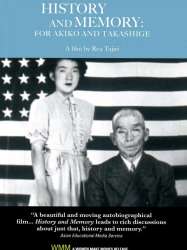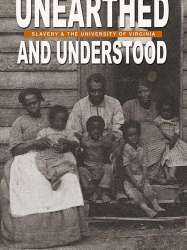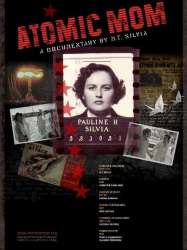Films with theme "Documentary films about historical events", sorted by revenue
 , 32minutes
, 32minutesOrigin USA
Genres Documentary
Themes Prison films, Films about racism, Documentary films about racism, Documentary films about law, Documentary films about war, Documentary films about historical events, Political films, Documentary films about World War II

Baghdad Holiday (2010)
, 33minutesDirected by Hannan Majid
Origin United-kingdom
Themes Documentary films about war, Documentary films about historical events, Political films

Chernobyl.3828 (2011)
, 30minutesOrigin Ukraine
Genres Documentary, Historical
Themes Environmental films, Documentary films about environmental issues, Documentary films about historical events, Documentary films about nuclear technology, Documentary films about technology, Disaster films
Twenty-five years have passed since Valeriy Starodumov worked as a dosimeter scout in September 1986. Valeriy worked at the epicenter of the explosion, the reactor's operation area, which was the most radioactive part of the site. The protagonist, a direct participant in the operation, went to the roof himself and brought people there after a failed attempt to clear the area with robots. At the government level, it was decided to assign soldiers and cadets of military schools to the task of cleaning the roofs. Unique pictures of the events of 1986 are widely used in the film. "Chernobyl.3828" is dedicated to people who saved the world from the radioactive contamination at the cost of their health and life.

Rocketmen (2014)
Origin United-kingdom
Genres Documentary
Themes Transport films, Documentary films about historical events, Documentary films about technology
Using archival footage, this film explores the American space program, from the Gemini program through the return to space after the Space Shuttle Columbia Disaster.

Fear of a Black Republican (2011)
, 1h51Origin USA
Genres Documentary
Themes Documentary films about historical events, Documentary films about politics, Political films
 , 1h32
, 1h32Genres War, Documentary
Themes Films about racism, Films about religion, Documentary films about racism, Documentary films about law, Documentary films about war, Documentary films about historical events, Documentary films about religion, Political films, Films about Jews and Judaism, Documentary films about World War II
The film tells its story by relating the accounts of Jewish survivors "who return to Italy in their late adulthood to revisit the scenes of their worst nightmares: hidden in terror, fleeing in desperation, separated from loved ones, saying final goodbyes without knowing they were final."

Genres Documentary, Historical
Themes Films about films, Films about racism, Films about religion, Documentary films about business, Documentary films about the film industry, Documentary films about racism, Documentary films about law, Documentary films about war, Documentary films about historical events, Documentary films about religion, Political films, Films about Jews and Judaism, Documentary films about World War II, Documentary films about films
Actors Christopher Plummer, Budd Schulberg
Le 20 novembre 1945 commence, au palais de justice de Nuremberg, le premier procès intenté par une instance judiciaire internationale. Sur le banc des accusés : 24 responsables du IIIe Reich nazi. Ce film, montage des principaux moments du procès, place le spectateur au coeur des audiences...

Unearth (2013)
, 18minutesDirected by Eduardo Montes-Bradley
Origin USA
Themes Films about slavery, Films about racism, Documentary films about racism, Documentary films about law, Documentary films about historical events

Atomic Mom (2010)
, 1h27Origin USA
Themes Environmental films, Seafaring films, Transport films, Aviation films, Documentary films about environmental issues, Documentary films about war, Documentary films about historical events, Documentary films about nuclear technology, Documentary films about technology, Political films, Documentary films about World War II
Atomic Mom is a documentary film written and directed by M.T Silvia, which focuses on the connection between two mothers that are each on a different end of the Hiroshima atomic warfare spectrum: Pauline Silvia, a United States Navy biologist, and one of the only female scientists present during the 1953 radiation detonations of Operation Upshot-Knothole at the then-Nevada Test Site, and Emiko Okada, a Japanese woman who was exposed to radiation from the Hiroshima nuclear bombings as a child. Atomic Mom also offers a comparison of the Hiroshima Peace Memorial Museum and the Atomic Testing Museum in Las Vegas, Nevada. Through the use of numerous interviews with Japanese doctors, historians and Hiroshima survivors, M.T Silvia discusses matters of censorship, value of scientific innovation, human rights, personal responsibility and the prospect of world peace in the aftermath of Hiroshima.

Sisters in Arms (2009)
Themes Films about terrorism, Documentary films about war, Documentary films about historical events, Political films
The film follows the experiences of three members of the Canadian military: Katie Hodges, an infantry soldier, Corporal Tamar Freeman, a medical professional, and Master Corporal Kimberly Ashton, a combat engineer. Revealing details of life on the front lines in Afghanistan, the film combines video diaries and recorded phone calls made by the soldiers with interviews by Freeman.
 , 1h24
, 1h24Directed by Sophie Deraspe
Origin Canada
Genres Documentary
Themes Films about computing, Films about sexuality, LGBT-related films, Documentary films about historical events, Documentary films about technology, LGBT-related films, LGBT-related film, Lesbian-related films
The film centres on Sandra Bagaria, a Montreal woman who was in an online relationship with star blogger Amina Abdallah Arraf al Omari. Bagaria became involved in the international attempt to rescue Arraf after her purported abduction by the Syrian regime.

The Green Prince (2014)
, 1h41Genres Thriller, Documentary
Themes Films set in Africa, Films about religion, Documentary films about law, Documentary films about war, Documentary films about historical events, Documentary films about politics, Documentary films about religion, Political films, Films about Jews and Judaism
The film tells the story of Mosab, son of Hamas leader Sheikh Hassan Yousef, who for ten years was a spy for Israel's Shin Bet.
 , 1h2
, 1h2Genres War, Documentary
Themes Films about children, Films about racism, Films about religion, Documentary films about racism, Documentary films about law, Documentary films about war, Documentary films about historical events, Documentary films about religion, Political films, Films about Jews and Judaism, Documentary films about World War II
Actors Alan Alda, Mamie Gummer
 Connection
Connection
